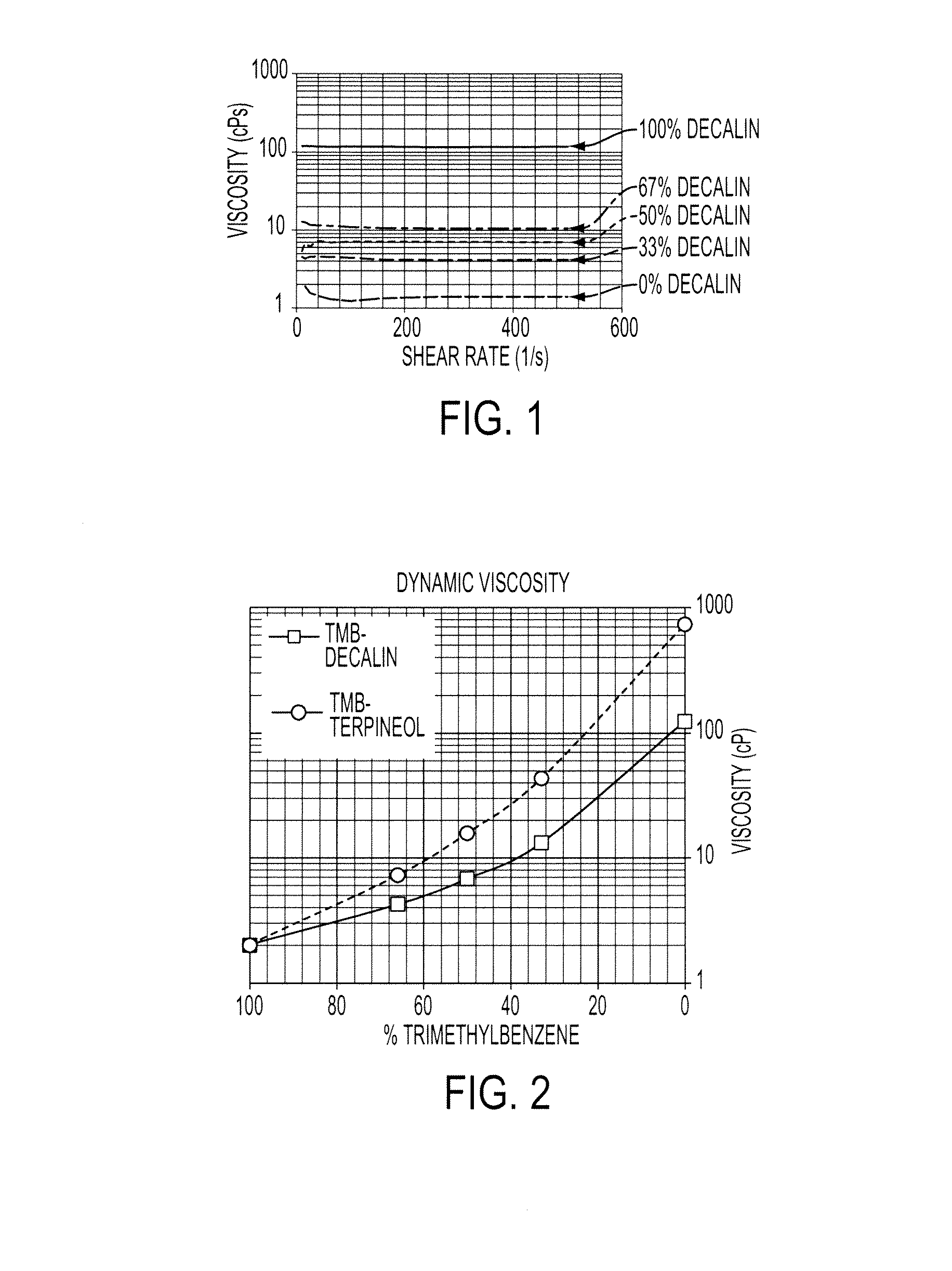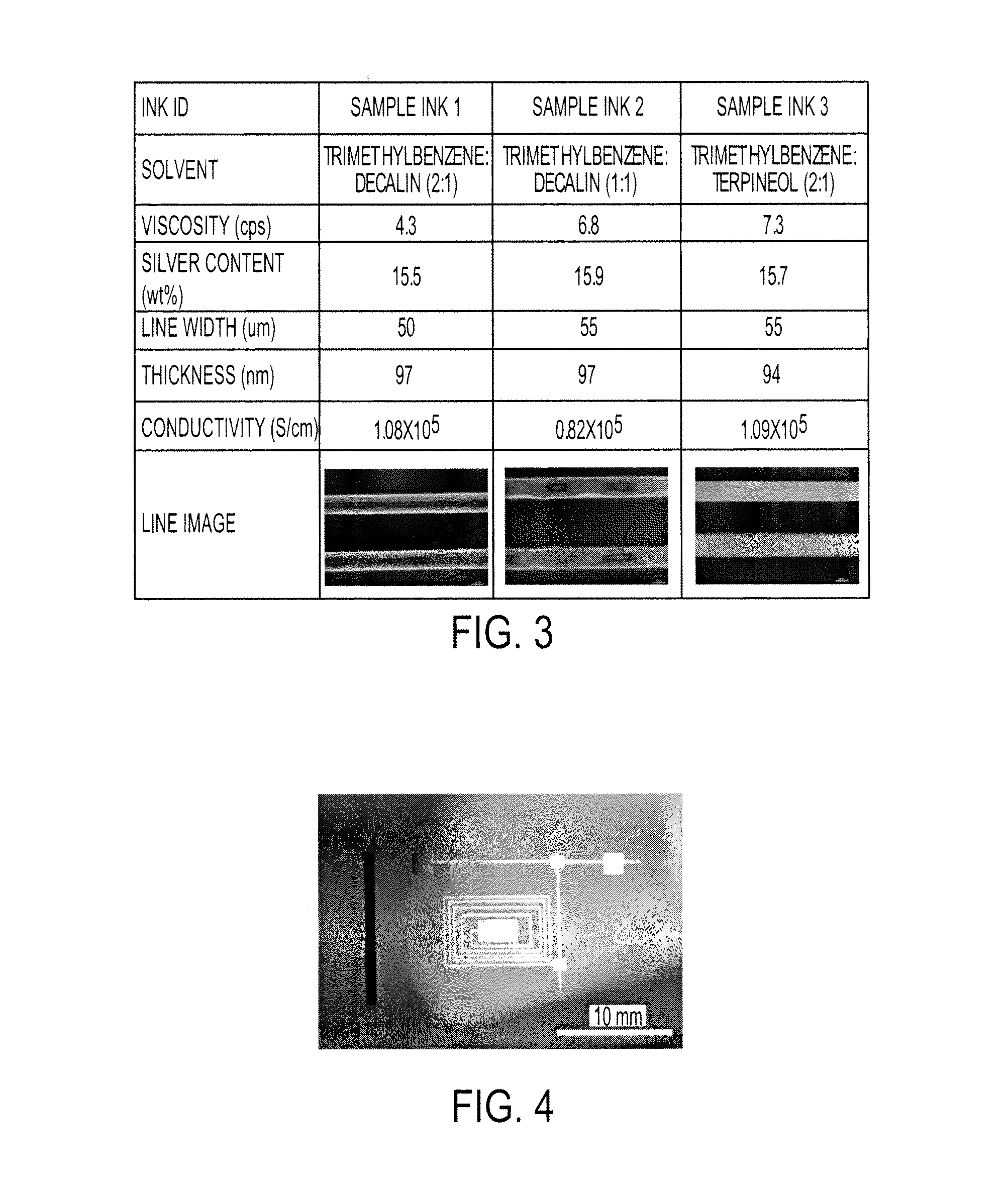Conductive compositions comprising metal carboxylates
a technology of metal carboxylates and compositions, which is applied in the direction of non-metal conductors, chemical coatings, liquid/solution decomposition, etc., can solve the problems of affecting the formation of consistent and reliable conductive features and stability of ink compositions, affecting the cost requirements of practical applications, and affecting the stability of silver nanoparticle ink compositions, etc., to achieve low viscosity and high viscosity
- Summary
- Abstract
- Description
- Claims
- Application Information
AI Technical Summary
Benefits of technology
Problems solved by technology
Method used
Image
Examples
example 1
Ink Formulation and Inkjet Printing
[0057]Silver neodecanoate was dissolved at 40 wt % in a solvent mixture to obtain an ink composition. Trimethylbenzene was used as the primary solvent, as the silver neodecanoate has an excellent solubility in it. Terpineol and decalin was used as the co-solvents to adjust viscosity of the formulation, and cohesion of the inks for good printability. FIG. 1 shows the viscosity of the ink formulations having different trimethylbenzene to decalin ratio. One can see that all formulations exhibited Newtonian behavior at a wide shear rate, which is very important for inkjet printing. The solution with trimethylbenzne only showed a low viscosity around 2 cps which is not suitable for inkjet printing. Upon adding decalin co-solvent, the viscosity can be manipulated or tuned from 2 to over 100 cps. When about 30 to about 70 wt % decalin was used in the solvent mixture, the composition exhibited suitable viscosity from about 4.3 to about 11 cps for inkjet pr...
example 2
Stabilizing the Solution and Lowering Sintering Temperature
[0060]Some of the above ink compositions showed yellow to orange brown color, particularly when stored at ambient conditions over time. The color may be due to the formation of silver nanoparticles or silver oxide nanoparticle during ink preparation and upon storage. To enhance the stability of the silver precursor composition, a small amount of neodecanoic acid (from about 0.1 to 2 wt % of the ink composition) was added during the ink preparation process. This small amount of carboxylic acid prevented the formation silver nanoparticles or silver oxide particle, resulting in very stable clear solution for over one month. Thus, one of the benefits of the present embodiments includes a longer shelf-life of the composition. To the inventors' surprise, when this composition was used to print or coat conductive layer, the silver precursor composition could be sintered at a lower temperature for a short time to achieve the same co...
PUM
| Property | Measurement | Unit |
|---|---|---|
| temperature | aaaaa | aaaaa |
| temperature | aaaaa | aaaaa |
| temperature | aaaaa | aaaaa |
Abstract
Description
Claims
Application Information
 Login to View More
Login to View More - R&D
- Intellectual Property
- Life Sciences
- Materials
- Tech Scout
- Unparalleled Data Quality
- Higher Quality Content
- 60% Fewer Hallucinations
Browse by: Latest US Patents, China's latest patents, Technical Efficacy Thesaurus, Application Domain, Technology Topic, Popular Technical Reports.
© 2025 PatSnap. All rights reserved.Legal|Privacy policy|Modern Slavery Act Transparency Statement|Sitemap|About US| Contact US: help@patsnap.com


